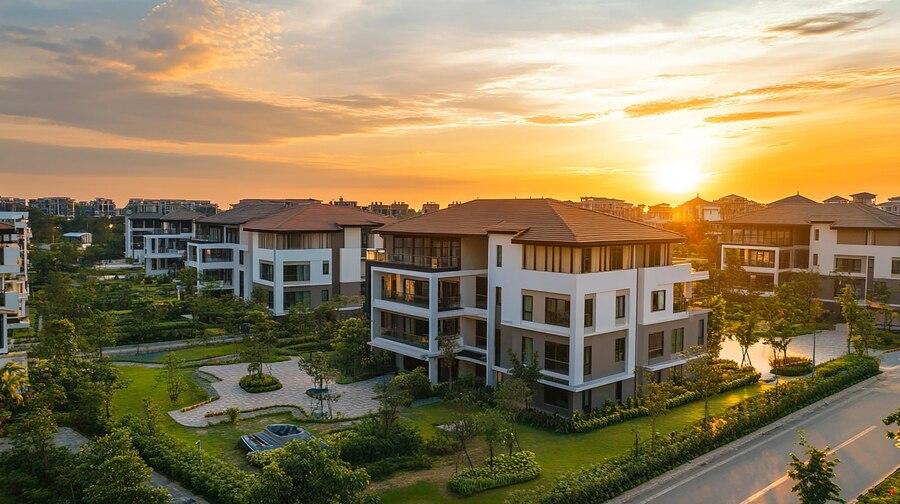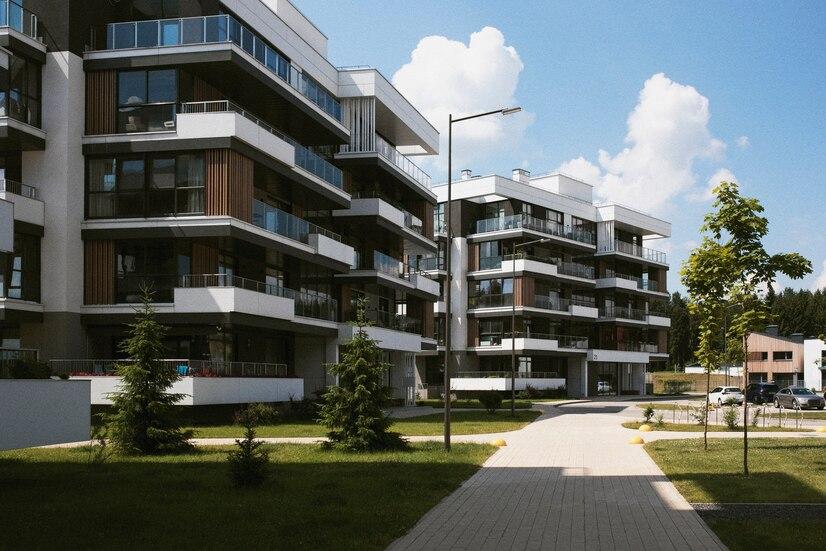



Table of Contents
- Introduction Middle Income Group
- Importance of MIG in the real estate market
- Role of MIG in Real Estate
- Types of Properties Available for MIG
- Challenges Faced by MIG in Real Estate
- Future Trends in MIG Housing
- Conclusion
- Faq's
Introduction Middle Income Group
The Middle Income Group (MIG) refers to a segment of the population that falls between the lower and higher income brackets, typically earning a moderate and stable income. In the context of real estate, MIG households are often characterized by their ability to afford homes, but with a focus on affordability and value. The income thresholds that define the MIG category vary based on government policies and regions, often linked to housing schemes aimed at making homeownership more accessible for middle-income earners. In India, for instance, the government has set specific income limits for MIG households to qualify for benefits under schemes like the Pradhan Mantri Awas Yojana (PMAY).
Importance of MIG in the real estate market
The Middle Income Group (MIG) plays a crucial role in the real estate market, especially in driving demand for affordable and mid-range housing. Here are key reasons why the MIG is important in the real estate sector:
High Demand for Affordable Housing: The MIG represents a large portion of the population that seeks affordable housing solutions. Their need for reasonably priced homes drives the development of mid-segment properties, ensuring a steady demand in the housing market.
Market Stability: The MIG provides stability to the real estate sector, as this group tends to have a more stable income and greater access to financing. This steady demand helps maintain consistent growth in the housing market.
Government Focus and Policies: Governments often design housing policies and subsidy schemes specifically for the MIG, such as the Pradhan Mantri Awas Yojana (PMAY). These policies encourage both developers and buyers to engage in the real estate market, stimulating growth.
Investment in Urban Areas: As urbanization increases, the MIG is a significant contributor to the expansion of suburban and urban areas. Their preference for housing close to employment hubs and essential services fosters real estate development in growing cities and towns.
Boost to Infrastructure Development: The growth of MIG housing projects leads to parallel development in infrastructure such as roads, schools, healthcare facilities, and retail establishments. This further enhances the livability and attractiveness of real estate markets. Importance Of MIG
Importance Of MIG
Role of MIG in Real Estate
The Middle Income Group (MIG) plays a pivotal role in the real estate sector, particularly in driving demand for affordable and mid-range housing. Here are some of the key aspects of the MIG's role in real estate:
Demand for Affordable Housing: The MIG represents a significant portion of the population that seeks homes within a reasonable budget. Their demand for affordable and mid-segment housing drives the growth of real estate projects that cater to this group, which in turn supports the expansion of the residential real estate market.
Contribution to Real Estate Growth: MIG homebuyers are major consumers of properties in urban and semi-urban areas, contributing to the growth of housing projects in these regions. Their need for housing fuels the construction of mid-income housing projects, ensuring a steady flow of real estate activity.
Government Policies and Incentives: Governments often focus on the MIG to promote housing affordability, offering subsidies, tax incentives, and financial schemes. Programs like the Pradhan Mantri Awas Yojana (PMAY) provide interest subsidies, encouraging MIG buyers to enter the housing market, thereby spurring growth.
Investment in Expanding Cities: As urbanization progresses, the MIG is crucial in expanding suburban and urban areas. Their preference for housing near employment hubs, schools, and healthcare facilities leads to increased demand in rapidly growing cities and towns, boosting real estate development in these regions.
Increased Access to Housing Finance: MIG households typically have stable incomes, making them eligible for home loans and financing options. Their access to affordable mortgage products contributes to higher property sales in the mid-range segment, stimulating the market further.
Impact on Real Estate Trends: MIG homebuyers influence real estate trends by shaping demand for specific types of housing, such as apartments and compact homes, that are budget-friendly yet offer modern amenities. Developers respond to these preferences, leading to the development of properties designed specifically for MIG buyers.
Types of Properties Available for MIG
The Middle Income Group (MIG) has access to a wide variety of property types, depending on their income range, location, and specific housing needs. Here are some of the common types of properties available for MIG homebuyers:
Affordable Apartments
Location: Primarily found in suburban or semi-urban areas, as well as in newly developed townships.
Size: Typically ranges between 600 to 1,200 sq. ft., with options for 1, 2, and 3 BHK units.
Benefits: These are often part of affordable housing schemes and come with attractive pricing, lower maintenance costs, and basic amenities like elevators, parking, and security.
Eligibility: Many of these apartments are sold under government schemes like Pradhan Mantri Awas Yojana (PMAY), which makes them more accessible through subsidies on loans.
Township Projects
Location: Located on the outskirts of major cities or in growing towns, township projects offer a blend of residential and commercial spaces.
Size: Various unit sizes are available, ranging from 1 BHK to 3 BHK, catering to the specific needs of MIG households.
Benefits: These projects often come with comprehensive amenities such as schools, parks, hospitals, shopping complexes, and clubhouses.
Affordability: Developers often offer flexible payment plans and partnerships with financial institutions to make purchasing easier for the MIG.
Flats in Gated Communities
Location: Spread across major urban centers and growing cities.
Size: Flats ranging from 1 to 3 BHK, offering secure living with access to essential amenities.
Benefits: Security features, community spaces, playgrounds, and sometimes additional facilities like gyms and swimming pools.
Affordability: Many developers focus on providing gated communities at reasonable prices, targeting the MIG segment with practical yet comfortable living options.
Independent Houses and Builder Floors
Location: Mostly found in smaller cities or outer suburbs of metro areas.
Size: Typically 1 or 2 BHK independent homes or builder floors.
Benefits: These properties offer more privacy compared to apartments and allow for future expansion. MIG buyers can often find these properties at lower prices in less central areas.
Affordability: These are often more affordable due to their location in less developed areas, and many are designed to suit the financial capacity of the MIG.
Government Housing Schemes
Location: Found in both urban and semi-urban regions, often developed by state or central government bodies.
Size: Units generally range between 500 to 1,200 sq. ft., depending on the scheme and locality.
Benefits: These properties are priced below the market rate and often come with attractive loan offers and subsidies.
Examples: Apartments under the PMAY or local state housing board initiatives, aimed at providing affordable housing for the middle-income group.
Co-Operative Housing Societies
Location: Common in cities like Mumbai, Pune, and Bangalore.
Size: Various unit sizes, ranging from small 1 BHK to larger 3 BHK units.
Benefits: These housing societies often come with a sense of community living and shared maintenance responsibilities.
Affordability: The cooperative structure helps reduce costs, making these homes more affordable for the MIG segment.
Challenges Faced by MIG in Real Estate
The Middle Income Group (MIG) faces several challenges in the real estate market, making homeownership or renting a suitable property more difficult. These challenges stem from financial constraints, market conditions, and regulatory factors. Here are some key challenges faced by MIG in real estate:
Affordability Constraints
High Property Prices: The rising cost of real estate, especially in urban areas, often makes it difficult for MIG buyers to find affordable housing. Property prices in cities like Mumbai, Delhi, and Bangalore are beyond the reach of most middle-income families.
Limited Budget: MIG families typically have a limited budget, making it hard to secure homes with modern amenities or in prime locations.
Higher Down Payments: The need for significant down payments can deter potential homebuyers in the MIG category from entering the market, as saving up for the initial payment can take years.
High Interest Rates on Home Loans
Loan Costs: Though there are government schemes and subsidies, high-interest rates on home loans can strain the finances of MIG homebuyers. The long-term commitment to EMIs (equated monthly installments) can deter families from purchasing homes.
Limited Loan Eligibility: Income levels often restrict the loan amount that MIG individuals can obtain, limiting their purchasing power and the types of properties they can afford.
Lack of Affordable Housing Supply
Supply-Demand Mismatch: There is a shortage of affordable housing units in major urban areas, leading to intense competition for the available properties. This mismatch between demand and supply makes it difficult for MIG buyers to find suitable options within their price range.
Focus on Premium Projects: Developers often prioritize luxury or high-end projects due to higher margins, leaving fewer affordable options for the middle-income segment.
Location Issues
Peripheral Locations: MIG families are often forced to look for homes in the outskirts of cities where prices are lower. However, these areas may lack essential infrastructure such as public transportation, schools, hospitals, and shopping centers.
Commute Challenges: Living in peripheral areas can lead to long and expensive commutes, adding to the overall cost of living and reducing the attractiveness of such properties.
Delays in Project Completion
Construction Delays: Many MIG homebuyers invest in under-construction properties due to lower prices, but they often face significant delays in project completion. This can lead to financial stress, especially if they are paying rent while waiting for their home to be completed.
Risk of Stalled Projects: The real estate sector has seen several instances of projects being stalled or abandoned due to financial issues or regulatory hurdles, leaving homebuyers in limbo. MIG in Real Estate
MIG in Real Estate
Future Trends in MIG Housing
The Middle Income Group (MIG) housing segment is poised to witness significant changes in the coming years, driven by evolving market dynamics, government policies, and consumer preferences. As urbanization continues and demand for affordable yet quality housing grows, several trends are expected to shape the future of MIG housing.
Increased Focus on Affordable Housing
Government Initiatives: Continued emphasis on affordable housing schemes, such as Pradhan Mantri Awas Yojana (PMAY), will remain a key driver for future MIG housing projects. With government subsidies and incentives, more developers are expected to invest in affordable housing units tailored for the MIG segment.
Regulatory Reforms: With policies aimed at increasing transparency and accountability, such as the Real Estate (Regulation and Development) Act (RERA), the sector will become more favorable for both developers and buyers in the MIG category.
Smaller Homes with Efficient Design
Optimized Space Utilization: To meet the affordability criteria, developers are likely to design smaller homes with more efficient layouts. Smart use of space, multi-functional furniture, and open-plan designs will become more common to provide comfort without increasing costs.
Compact Living: As urban spaces become more crowded and expensive, the demand for compact homes that offer functionality and convenience within limited space will grow. Developers will focus on offering value-added amenities in smaller, budget-friendly units.
Sustainable and Green Housing
Eco-Friendly Materials: There will be a greater emphasis on sustainable construction practices, with the use of eco-friendly materials and energy-efficient designs becoming more prevalent in MIG housing projects. Solar panels, rainwater harvesting systems, and energy-efficient lighting will become common features.
Affordable Green Certification: Developers may seek affordable green certifications, like the GRIHA or EDGE, for their projects, offering MIG buyers environmentally responsible housing options that also reduce long-term utility costs.
Technology-Driven Developments
Smart Homes: Smart home technology, once considered a luxury, will increasingly be integrated into MIG housing. Basic automation for lighting, security, and energy management systems will become part of the standard offerings in new developments targeting the MIG category.
Digital Platforms for Home Buying: The real estate industry is embracing digitalization, and future MIG homebuyers will rely more on virtual tours, online booking systems, and digital payments, enhancing convenience and transparency in transactions. Trends In MIG housing
Trends In MIG housing
Conclusion
In conclusion, the Middle Income Group (MIG) plays a vital role in shaping the real estate market, and the future of MIG housing is set to evolve with changing trends and demands. Government initiatives, sustainable practices, technological advancements, and innovative housing models are making homeownership more accessible for this segment. The focus on affordability, efficient design, and community living will continue to drive the growth of MIG housing, while flexible financing options and infrastructure development will further support this market. As urbanization continues, MIG housing will remain crucial in addressing the need for quality yet affordable homes, contributing to a more inclusive and robust real estate sector.
explore further
Latest from Encyclopedia
More from Interactions
Resources
Dwello, for every home buyer, is a way to go from 'I feel' to 'I know', at no extra cost.




